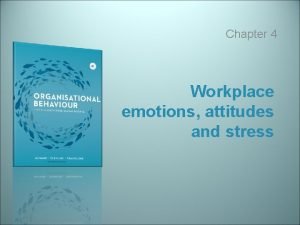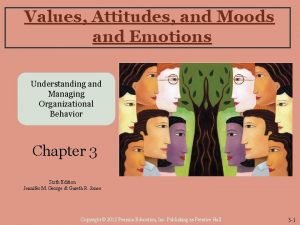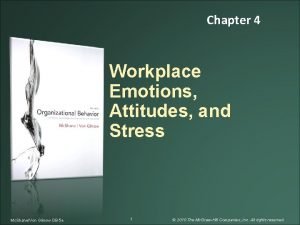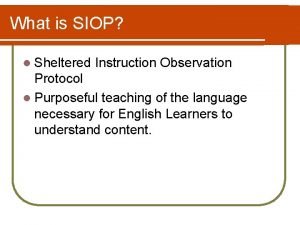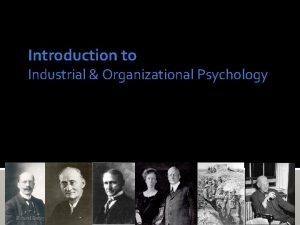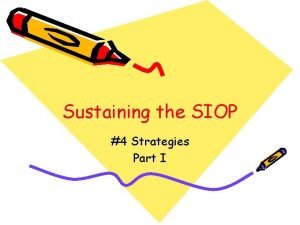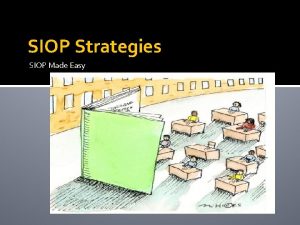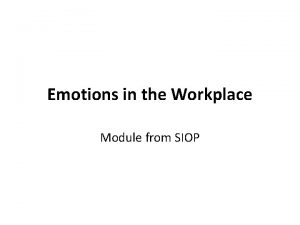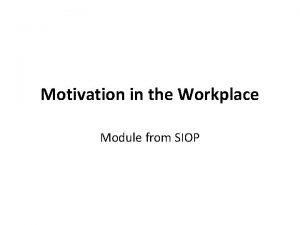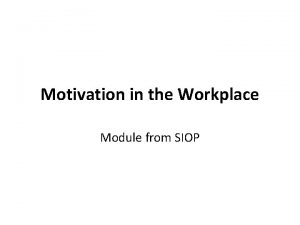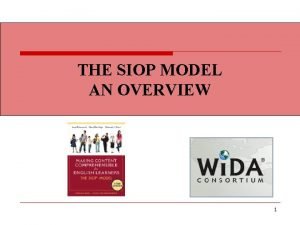Emotions in the Workplace Module from SIOP Emotions







- Slides: 7

Emotions in the Workplace Module from SIOP

Emotions in the Workplace • Emotions are states of feeling that are often intense, last for only a short time, and are clearly directed at (and caused by) someone or some circumstance. – Positive emotions include joy, pride, relief, hope, love, and compassion. – Negative emotions include anger, anxiety, fear, guilt, shame, sadness, envy, and disgust.

Emotions in the Workplace • Has anyone here ever worked in retail or as a server in a restaurant? • Did you ever have to be happy when you didn’t want to in order to please a customer? • That’s called emotional labor!

Emotional Labor • Emotional labor is the need to manage emotions to complete job duties successfully. – Two major types: • Surface Acting: Painting on or faking the appropriate emotional display (e. g. , cheesy smile) • Deep Acting: Attempting to change your emotions to fit the demand (e. g. , trying to actually feel happy) • Why do we do this? For increased tips, increased sales, the boss demands it, etc.

Emotional Contagion • Why do we emotionally labor? So customers can “catch” the emotion… • Emotional contagion shows that one person can “catch” or “be infected by” the emotions of another person. • Happy customers are paying customers!!

Class Discussion • Take a minute and talk to your neighbor. • When have you engaged in emotional labor? • When have you seen others doing emotional labor? • Is it a good thing? A bad thing?

For more information… Allen, J. A. Pugh, S. D. , Grandey, A. A. , & Groth, M. (2010). Following display rules in good or bad faith? : Customer orientation as a moderator of the display rule-emotional labor relationship. Human Performance, 23, 101115. doi: 10. 1080/08959281003621695 Bono, J. E. , Foldes, H. J. , Vinson, G. , Muros, J. P. (2007). Workplace emotions: The role of supervision and leadership. Journal of Applied Psychology, 92, 1357 -1367. doi: 10. 1037/0021 -9010. 92. 5. 1357 Grandey, A. (2003). When "the show must go on": Surface and deep acting as predictors of emotional exhaustion and service delivery. Academy of Management Journal, 46, 86 -96. doi: 10. 2307/30040678 Rupp, D. E. , & Spencer, S. (2006). When customers lash out: The effects of customer interactional injustice on emotional labor and the mediating role of discrete emotions. Journal of Applied Psychology, 91, 971 -978. doi: 10. 1037/0021 -9010. 91. 4. 971
